Farm Diversification: Investing in Glamping vs Renewables
The UK farming industry is going through a difficult time. Subsidy withdrawals and tightening legislation due to Brexit and the volatility of climate change and the UK economy means more and more farmers are considering diversification.
But in terms of “side hustles” for farmers, how are you supposed to know which route is best for you? Is it starting a hospitality business like a glamping or camping business, hosting experience days or perhaps investing in renewable energy on your land?
Today’s article will compare two of the above strategies, glamping and renewables, to help you figure out which one is better for you and your agriculture business.
Investing in Renewable Energy
With the UK’s pledge to become a net zero economy by 2050 and the National Farmers’ Union’s promise to do the same by 2040, becoming part of the solution by diversifying into renewables seems like an easy choice to make.
But before you do so, it’s important to understand what the requirements for entry are and what way would be best for you to approach this opportunity if you do decide to go for it.
Let’s start with land requirements for renewable energy. For example, developers in this field are looking for plots of at least 10 acres of usable land for solar energy, with clear, flat ground and, of course, plenty of sunshine. Your location also matters - the farther your plot of land is from the grid, the higher the cost of interconnection is.
There are two possible routes you can go down with renewable energy investment:
1. Going it alone
The first option is to pay for the technology needed outright and from your own pocket (perhaps with the help of a farm diversification grant or some financing) and have complete ownership of the energy production on your land.
It also means you can still utilise the land, at least if you go the solar route; your smaller livestock animals, including sheep, can still graze on land used by solar panels. Solar panels can also be installed on rooftops for a space-saving solution.
Owning and operating a renewable energy plant does require its fair share of planning support as well as insurance and risk management on top of a sizable initial investment. For example, a single wind turbine costs around £300,000.
If you are interested in this mode of farm diversification, you have to consider carefully the amount of energy your farming business needs. While you could invest in storage for the energy you produce, this is expensive. Instead, you can consider selling surplus energy to the grid for some passive income. You should also scrutinise your renewables business plan in context with plans and goals you have for your farming business.
Leasing or selling your land
The other option is simply leasing or selling some of your land to the renewable energy industry. This way, you don’t have to carry the burden of paying for and owning solar panels and the technology needed to keep them operational.
Selling your land to developers in the renewable energy industry brings in a nice lump sum but can’t really be considered a long-term investment.
With leasing, you can expect a steady rental income monthly, but the returns won’t necessarily be as impressive as with some other diversification options. Renewable energy specialists will typically pay farmers rents of up to £1,000 per acre for the use of their land.
Let’s compare this to the expected ROI of glamping, for example, where the average annual income for a single Wigwam Classic 4 Berth Pod pod is £10,000-£20,000+ annually, with sites on average having 6 pods.
Starting a Glamping Business
Now, let’s have a look at starting a glamping site as your farm diversification idea. The industry has grown significantly in recent years, and exponentially so after the start of the pandemic as people have opted for more “staycations” over international holidays.
A glamping business is less disruptive to your everyday life than, say, running a B&B in your home. With city folk and families looking for a rural escape, offering a taste of farm life with pretty scenery and things like the chance to pick your own breakfast eggs or luxuriate in a hot tub, glamping could prove a lucrative side business to run alongside your farming efforts.
Like with renewables, there are a number of things to consider to make sure glamping is the right business opportunity for you.
For one, your potential glamping site should be easy to reach from local highways - and you get bonus points for being near public transport links. Your local area should also offer plenty to do for glampers, whether that’s hiking trails, scenic beaches or charming market towns filled with quirky boutiques.
There’s also a significant initial investment needed to start a glamping site. For Wigwam® Holidays franchisees, this is usually around £200k-£260k.
Learn More about Wigwam
The Wigwam brand consists of two separate but overlapping businesses - Wigwam Cabins and Wigwam Holidays.
Wigwam Holidays operates as a franchise, booking system and website. It is one of the top glamping businesses in the UK, consisting of over 80 UK locations and welcomed over 100k guests last year. Wigwam Holidays offers a tried and tested franchise model to its franchisees, and “great holidays in the great outdoors” to its guests.
Wigwam Cabins is a manufacturer of high quality wooden cabins. It’s the business that invented the ‘glamping pod’ over 30 years ago. Today, from its workshop in Perth, Wigwam Cabins focuses on building a range of glamping pods and timber lodges. Fear not, you do not need to be a part of Wigwam Holidays to buy products from Wigwam Cabins.
Get in touch with us
If you would like any more information from us, please fill in the form below and we will get back to you within two working days.

